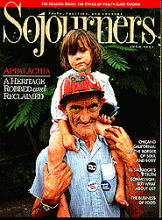The Living, Annie Dillard's first novel, signifies a switch of genres for an established and respected non-fiction writer. Dillard has published collections of essays (including the Pulitzer Prize-winning Pilgrim at Tinker Creek), an autobiography, books about the craft of writing, and a collection of poems (whose lyrical language she has since deftly applied to prose).
This novel is a "big story," containing many years, pages, characters, and eventually converging plot lines. The Living, the tale of pioneer settlement near Bellingham, Washington, is a traditional epic only in terms of its size. With this novel Dillard has accomplished the writing of a new sort of historical Western--one that sympathetically portrays Native American culture, shows strong women as significant characters of the frontier, and realistically demonstrates what a feat it was simply to survive.
The novel begins with Ada Fishburn's arrival on the beach of Puget Sound in 1855. Ada survives husbands and children. She mourns that her son, who was run over by wagon wheels on the journey west, was "a beloved son that God of all people should know about." Dillard demonstrates the impact that repeated infant death had on mothers. Her telling of these and other events from a woman's point of view is refreshing.
Ada participates in and watches the invasion of white settlers. She sees settlers arrive and flee, and children and parents die from disease and the perils of frontier life. Towns boom and bust. Chinese immigrants, forbidden from owning land, are herded onto boats, sent back to San Francisco or the sea. Natives of the Lummi, Skagit, and Nooksack tribes are confined to reservations, killed by diseases brought by white settlers, or partially assimilated into the new culture.
Read the Full Article

